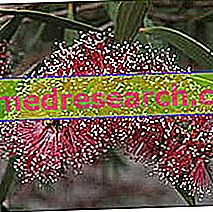Diet, as well as physical activity, seems to be one of the most important components in the prevention of osteoarthritis.
What is Arthrosis
Arthrosis, or osteoarthritis (not to be confused with arthritis), is a chronic, degenerative, progressive but NOT inflammatory joint disease. Osteoarthritis is characterized by:
- Articular cartilage alteration
- Formation of subchondral bone and joint margins (a sort of "ossification" of some typically cartilaginous sites)
Although osteoarthritis can be defined as a degenerative disease (ie that progressively worsens and independently of other factors), it is often accompanied by more or less intense inflammatory states.
Classification
Osteoarthritis is distinguished in primary and secondary:
- Primary or idiopathic: consequent to a "primitive" metabolic alteration of the articular cartilage, with causes that are unknown or not easily identifiable. He has a debut between 50 and 60 years, and the causes are of a general nature
- Secondary, therefore attributable to traumas or other diseases, such as dysplasia, rheumatic diseases, etc. It has local causes.
NB: In diagnostics the classification of arthrosis is not always easy and well distinguishable.
Symptoms
Osteoarthritis gives rise to a fairly uniform and easily identifiable symptomatology: pain, functional limitation and vicious attitudes (postural and walking errors) resulting from the first degenerative phases of cartilage.
Causes
Predisposing factors for osteoarthritis can be:
- General: age (consequent alteration of the pH of the joint lubricating fluid called synovial ), heredity, hormonal imbalance ( especially of estrogen ), obesity (due to joint overload), metabolic alterations of electrolytes (trace elements such as calcium and phosphorus) and environment (climate, habits and work).
- Premises: abnormal distribution of joint load and alterations of other pathological nature.
Diet and Arthrosis
There are many theories and differing opinions on the

The dietary balance represents a preventive action against the onset of osteoarthritis
By observing and evaluating the general causes likely implicated in the pathogenesis of primary arthrosis, it is evident that these are highly preventable conditions through nutritional correction.
Food tips
- First of all, weight control and maintenance of a normal body mass index ensures, in the long term, the preservation of joint cartilage integrity, injury prevention and the possibility of regular physical activity. In the event of the onset of full-blown arthrosis, weight control minimizes joint friction and with it the related pain.
- Diet can also act effectively on the plasma ratio of electrolytes, among which the most important component is undoubtedly the balance of calcium and phosphorus. These two trace elements affect general skeletal health and their metabolism is involved in both synthesis and bone remodeling.
- In arthrosis, numerous studies have been carried out on alterations in joint pH; the results show that the acidification of the synovial fluid promotes articular "aging", although it is not yet clear how food can affect the toxic accumulation process of the joint. A hyper-protein diet, which certainly favors the urinary excretion of calcium, does NOT seem to weigh heavily on the acidification of the blood, as the blood plasma constantly undergoes the infill of homeostatic systems; it can be deduced that the deposition of acid molecules inside the synovium is not strictly attributable to the nitrogenous waste of protein origin. This does not mean that consuming alkalizing foods such as fruit and vegetables frequently (containing magnesium Mg) and limiting protein intake to the recommended dose could be useful for maintaining organic homeostasis and preventing osteoarthritis. Even meat foods could play an important role in the diet for the prevention of osteoarthritis: cartilaginous tissues, in particular, are rich in glucosamine sulfate and chondroitin, two nutrients subject to massive advertising campaigns aimed at promoting specific supplements for joint health and improvement of osteoarthritis symptoms. Broths, tripe and boiled are the richest sources of food in collagen, chondroitin and glucosamine. If you intend to resort to specific supplements, the recommended dose of hydrolyzed collagen varies between 10 and 15 grams per day, while that of glucosamine and chondroitin (generally associated) is about 500 mg one to three times a day.
- For women, the hormonal imbalance of menopause is an additional risk factor; in this regard, hormone replacement therapy, the consumption of foods containing phytoestrogens (for example soy) or dietary supplementation could constitute a protective element against arthrosis.
Bibliography:
- Hygiene, preventive medicine and public health - Marinelli, Montemarano, Liguori, D'Amora - Piccin - pag 343
- The natural cure in osteoarthritis - HG Schmidt - Hermes editions - page 49:51



